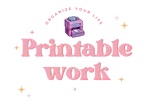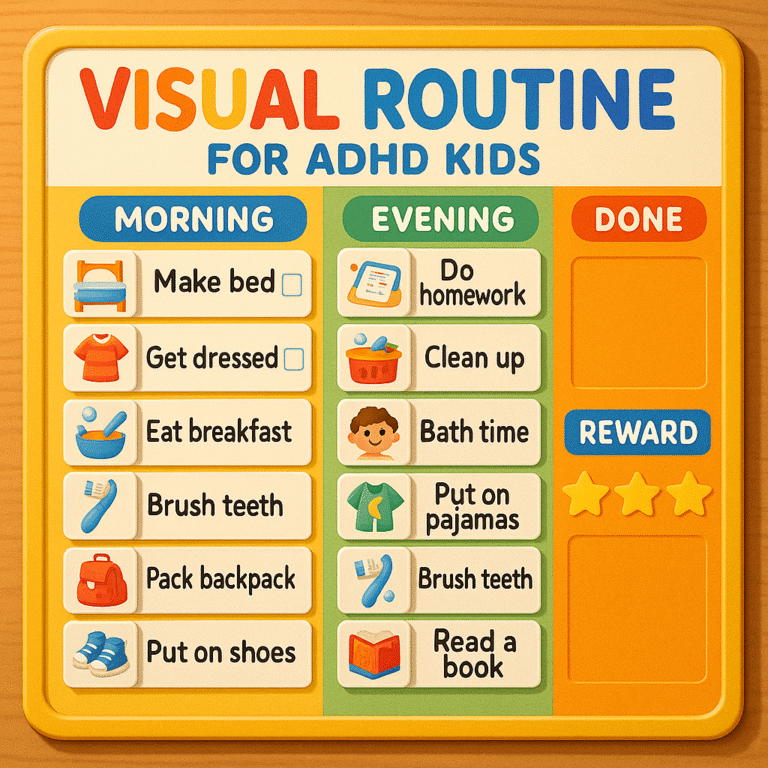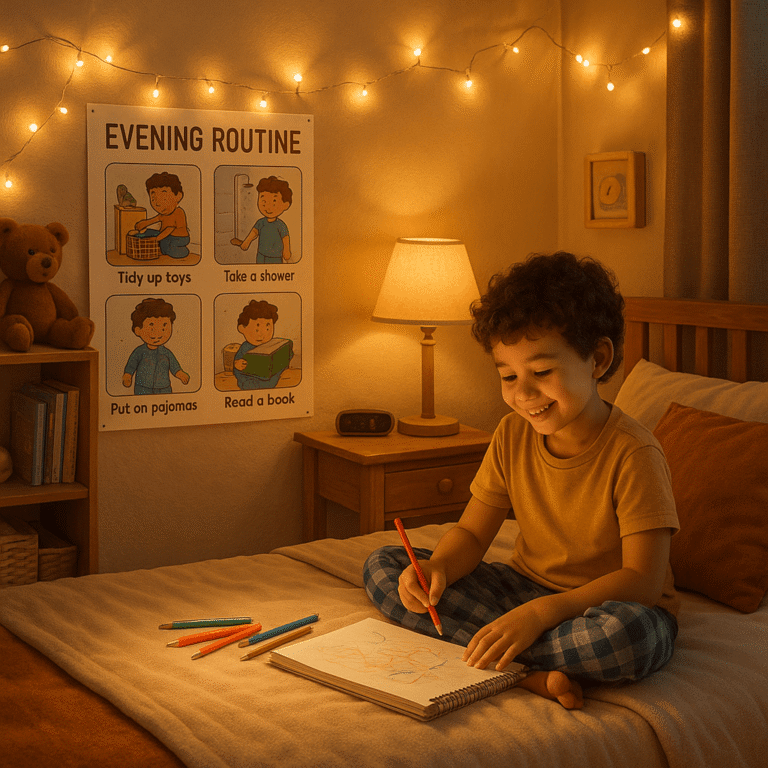If your child constantly forgets tasks, gets overwhelmed by daily routines, or needs frequent reminders just to brush their teeth, you?re not alone.
Kids with ADHD often have underdeveloped executive functioning skills. This means they may struggle with memory, planning, task initiation, and follow-through. But there?s a simple, effective tool that can help: a checklist for kids with ADHD.
Checklists offer structure without pressure. They support self-regulation, boost focus, and help build independence?one task at a time.
? Why Checklists Work So Well for Kids with ADHD
Here?s what makes checklists so powerful:
- ? Reduce working memory load ? no more needing to mentally juggle steps
- ? Provide clarity and visibility ? ?What should I do next?? becomes obvious
- ? Encourage task completion ? each checkmark becomes a mini win
- ? Promote independence ? less nagging, more self-direction
- ? Support transitions ? from task to task, or activity to rest
For kids with ADHD, a visual step-by-step path takes the pressure off their brain?and off of you, too.
?? How to Build and Use a Checklist for Kids with ADHD
Let?s break it down into a few steps you can start using today:
? 1. Choose a Single Routine to Focus On
Don?t try to checklist the whole day. Pick one part of the routine first, like:
- Morning routine
- Getting ready for school
- After-school tasks
- Cleaning up the bedroom
- Bedtime wind-down
? Focus = success. You can always add more later.
? 2. Break the Task into Clear, Visual Steps
Each step should be short, specific, and action-oriented. For example:
- “Put on socks.”
- “Place lunchbox in backpack.”
- “Wipe the table.”
Avoid vague phrases like ?get ready? or ?be good.?
? Use icons or clipart for younger children or non-readers. Color-coding helps as well.
? 3. Make It Fun and Personalized
Let your child help design or decorate their checklist:
- Choose fonts, colors, or themes
- Add reward icons or progress bars
- Give it a creative name: ?Mission: Morning? or ?Super Kid Tracker?
? Ownership builds buy-in. The more they feel it?s their checklist, the more likely they are to use it.
? 4. Use It Daily and Make It Routine
Place the checklist somewhere visible: on the fridge, by their desk, or inside their planner. Then:
- Start the day by reviewing it together
- Let them check off tasks themselves
- End the day with praise and encouragement
? Consistency is more powerful than perfection.
? 5. Layer on Rewards and Reflection (Optional)
To keep motivation high:
- Track how many tasks are completed per day
- Use star stickers or a simple tally system
- Celebrate progress with non-material rewards (extra playtime, a walk, a game)
? Review what worked, what didn?t, and adjust together. This teaches meta-cognition?an essential ADHD skill.
? Where to Find a Printable Checklist for Kids with ADHD
You don?t have to start from scratch. Our ADHD-friendly printable kits are designed for simplicity and success. They include:
- ? Daily and weekly checklist templates
- ? Routine-specific designs (e.g. morning, chores, homework)
- ? Visual icons and progress trackers
- ? Editable Canva versions
? Explore Printable Checklists
? External Resource:
Backed by experts, ADDitude?s article offers additional checklist strategies tailored for executive function challenges:
? Daily To-Do Lists That Work for ADHD Brains ? ADDitude
? Final Thought
A checklist for kids with ADHD is more than a piece of paper?it?s a framework for success.
By helping your child visualize what needs to be done and track their progress, you empower them to become more independent, more organized, and more confident.
Start small. Celebrate often. And let the checklist become the gentle guide your child can rely on.
You?re not just managing behavior?you?re building skills for life. ?







